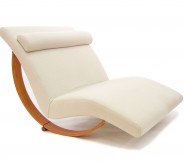Lot #37 - Colin McCahon
-
Auction House:Mossgreen-Webb's
-
Sale Name:The Warwick & Kitty Brown Collection
-
Sale Date:17 May 2017 ~ 6.30pm (NZ time)
18 May 2017 ~ 6.30pm (NZ time) -
Lot #:37
-
Lot Description:Colin McCahon
The Rich Man Will Disappear (Practical Religion Series)
conte crayon on paper, 1969
1555mm x 550mm
signed Colin McCahon and dated Sept '69 lower right in conte crayon, inscribed James I. Practical Religion in conte crayon lower left -
Provenance:Purchased Peter McLeavey Gallery, Wellington. Accompanied by original purchase receipt, dated 21/1/1977.
-
Exhibited:Written paintings and drawings: Colin McCahon, Barry Lett Galleries, Auckland, 6 - 17 October 1969.
-
References:Colin McCahon Database Number cm000295 http://www.mccahon.co.nz/cm000295; ILLUSTRATED: Art New Zealand 9, February/March/April 1978, The Rationale of a Private Collector by Hugh Foster, p. 30.
-
Notes:A NOTE FROM WARWICK BROWN: This was not purchased at the original exhibition; but eight years later. Whilst I had been looking at McCahon's work for some time, it was not until I saw another work from this series that I came to appreciate him. The work I found so engaging carried the inscription 'He who would know good days should seek peace and pursue it'. I recall viewing a number of works from this series at the Peter McLeavey Gallery. McLeavey rolled them out on the gallery floor for me to view. This work, really spoke directly to me, given my personal situation in 1977. ESSAY: On 4 June 1969, Colin McCahon wrote to John Caselberg: "Have you looked at the New English Bible (Oxford-Cambridge 1961) WOW. It says lovely things - like - Mary went to the place where Jesus was." (1)Gifted a copy by his wife, Anne, McCahon never again used any other version of the New Testament in his paintings. The approach followed by the translators was known as 'dynamic equivalence' or 'thought-for-thought' translation; they understood the Greek original as precisely as they could and repeated in modern colloquial English what the author was saying. Some traditionalists, most famously the poet T S Eliot, abhorred the new translation but McCahon immediately embraced it. From April 1969, he began making paintings directly from the book (including one using the phrase quoted above). Later that year, McCahon acquired heaps of plain wallpaper, which he cut into lengths of around 1500mm and used for what he called 'written drawings': often called 'scrolls'. Onto the strips of wallpaper, using watercolour washes for backgrounds, he inscribed with conté crayon around 90 separate texts, seeing them as preliminary work for major text paintings that came later, such as Victory over death 2 and Practical religion (both 1970). Incidentally, the phrase, 'Practical religion', also used at the bottom of this scroll, comes from a 'running head' in the New English Bible. Around 20 scrolls came from the new Bible. It was one of four main sources; the others (all recently acquired) included The Sunday Missal, a Roman Catholic publication, Journey Towards an Elegy, a book of poems by Peter Hooper, and The Tail of the Fish by Matire Kereama, from which he took songs and proverbs in Māori .Of the various books of the New Testament from which he quoted, McCahon was particularly drawn to the brief ALetter of James, from which he derived seven scrolls, including the present work. The author, James, is traditionally thought to have been the brother of Jesus. His letter belongs to the biblical genre known as 'wisdom literature', consisting largely of moral exhortations and precepts based on Jesus' teaching. James calls on Christians to rise above injustice and poverty by doing good, staying holy and embracing heaven not the material world. Worldly riches mean nothing in the eye of God, the writer asserts (presumably endorsed by the artist). His comparison of riches disappearing like the petals of a lovely flower under the scorching sun is reminiscent of Christ's saying, "It is easier for a camel to go through the eye of a needle than for someone who is rich to enter the kingdom of God". McCahon's 'written drawings' vary greatly in how the texts are treated. Sometimes he uses multiple colours or combines texts with visual motifs; often he mixes different kinds of lettering, combining block capitals with cursive handwriting. In this example, however, the methodology is fairly plain and simple: just one background colour is used and all the text is in McCahon's familiar handwriting. The main devices animating the work are repetition and variation. Four different sizes of lettering are utilised, ranging from six words per line to the largest size of all: the single repeated word 'lost' with a line to itself. McCahon also introduces variation into the text itself, repeating the final statement about the rich man withering away in words of different order and size, presumably for emphasis. In Colin McCahon: Artist (1984, 1993), Gordon Brown chose this classic example to illustrate the series. PETER SIMPSON 1. Quoted in Peter Simpson, Answering Hark: McCahon/Caselberg; Painter/Poet (Potton, 20010, p 99.
-
Estimate:NZ$65,000 - 85,000
-
Realised Price:
-
Category:Art
This Sale has been held and this item is no longer available. Details are provided for information purposes only.










